#mrs. massey
Explore tagged Tumblr posts
Text

For the love of god don't google this movie before you watch it, just go into it completely blind.
#arsenic and old lace#arsenic and old lace (1944)#peter lorre#raymond massey#cary grant#priscilla lane#jean adair#josephine hull#mortimer brewster#jonathan brewster#elaine harper#herman einstein#martha brewster#abby brewster#lieutenant rooney#officer o'hara#officer brophy#teddy brewster#taxi cab driver#mr witherspoon#another shitpost
37 notes
·
View notes
Text
Mrs Danvers & Rebecca
from Rebecca by Daphne du Maurier



submitted by @thehobbitwithstickyuppyhair
#I wasn't sure what to do for pictures because rebecca doesn't actually appear. but her pussy haunts the narrative#< I'm quoting a tumblr post. not just saying that lol#I just discovered there was an adaptation of this where jeremy brett played maxim with his ex-wife anna massey as mrs danvers#this was 17 years after they divorced cos he left her for a man. that must've been awkward on set lol. looks like they were friends though#rebecca#daphne du maurier#polls#classic literature#queer#wlw#sapphic#new post
22 notes
·
View notes
Text

Milan, Italy | 04.05.2023
📸 davidmassey123
#måneskin#maneskin#ethan torchio#mr. torchio + bun#ethan + glasses#damiano david#victoria de angelis#vic doing that face#thomas raggi#✌🏻 & 🤟🏻#må smiling 😁#david massey#my posts 💫#may 2023#italy: milan
83 notes
·
View notes
Text

69 notes
·
View notes
Text
Really good that the episode of “Make Some Noise” that I’ve decided to watch as a palate cleanser after finishing the director’s cut of Doctor Sleep is the one where the first player (Josh Ruben) enters doing an impression of Jack Nicholson in The Shining. Perfect. 😅
#Mrs. Massey isn’t real and she can’t hurt me… Mrs. Massey isn’t real and she can’t hurt me…#make some noise#doctor sleep#the shining#mollie has words#mollie is very scared and everyone else in the house fell asleep before they went back to the overlook
0 notes
Text
#i'm sorry op WHAT #his ex wife???? #the drama in this man's life
yeah! it was 17 years after they divorced because Jeremy left her for a man. it seems they were generally amicable, but they were feuding and ignored each other for the entirety of filming because she was angry that he irresponsibly bought their 18 year old son a motorbike (according to their son's memoir)
considering the plot of Rebecca, that could only have added to the tension between those characters
the fact that Jeremy Brett played both Dorian Gray and Basil Howard AND both John Watson and Sherlock Holmes throughout his career. he has the range.
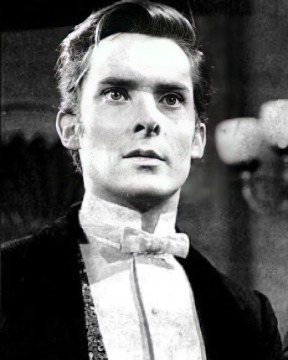

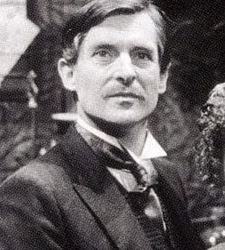
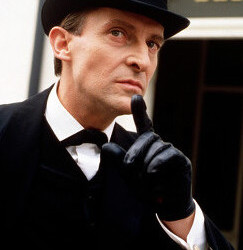
#because it seems that anna massey kind of resented him for being impulsive and reckless while she was left to raise their son responsibly#while mrs danvers resents maxim for impetuously remarrying and moving on while she wants to keep things the way they were#jeremy was also remarried at this point while she was a single parent#the dramaaaa#jeremy brett#rebecca daphne du maurier
1K notes
·
View notes
Text
November is usually my Shining month, and so I want to bring forward again something I have been repeating for a long time now but that I don't see being picked up a lot by people. A detail that is well-hidden inside the Doctor Sleep movie, but that makes the piece even more infinitely appreciable and shows it was made by true Shining fans.
And this detail is... the ghosts of the Overlook Hotel.

Now, when this bunch appeared during the final scene some familiar faces could be spotted. Grady of course, the Injured Guest from the "Great party, isn't it?" scene, the Twins, and of course the Woman of Room 217 -sorry, 237. But there are other faces there - seemingly random people in fancy outfit just for the sake of it. People were confused as to who these people were...
But all you have to do is look at the end credits. And you have a big surprise.
The familiar faces are confirmed to be the ghosts we always thought we were, or to correspond to famous ghosts of the original novel. The twins are confirmed as Grady's two daughters, while the woman in the white dress (not on the picture above but you can her in the scene) is Mrs. Grady. Meaning we have the whole Grady family as ghosts. The woman of room 237 is confirmed to be indeed Mrs. Massey, just like in the book ; as for the Injured Guest (only referred to as "injured guest" in the original scripts of The Shining), the sequel decided to make him Horace Derwent. Meaning he likely can switch between a young/attractive and older/more gruesome form, just like Massey's ghost, since in the original movie Derwent was clearly seen though not named in the scene with the man wearing a dog-bear-like costume (the script confirms it is supposed to be a dog costume though).
Alright, but what of the others? Now this is where things get interesting! The bald man to the right of Grady? That's Vito the Chopper. Yes, the Vito the Chopper from the novel by King, the mafia boss who got his head blown off in the Presidential Suite - as for the two men near him, they are his two bodyguards, Victor T. Boorman and Roger Macassi. Also from the book. These three characters are actually an Easter egg for those who read the book (and we know from the original treatment of Kubrick's movie that the criminal paradise-era of the Overlook and the murders at the Presidential Suite were originally supposed to play a big role in the cinema version of the story too).
But things get even better with the last ghost of the group. He doesn't appear in the picture above either, like Mrs. Grady, but you can notice him during the scene, a large man right behind Mrs. Grady when the ghosts first appear (he is played by Marc Farley). And the ghost's name, as revealed in the credits is... James Parris.
Now, fans of the novel might wonder "Wait... Who's that? I don't recall reading about him". And indeed, you did not! At least if you just read the regular version of the novel! James Parris is however a true character of the Shining, a true victim of the Overlook Hotel, a character written about and invented by Stephen King... But he is part of the deleted prologue of the novel, "Before the Play". You know this prologue that was not part of the published novel but was released in various TV magazines several times, and then finally re-added to the main novel in the collector Cemetery Dance edition of "The Shining"? You must have heard of it - even before the Cemetery Dance release the prologue was going around the Internet, published on small fan websites and discreet literature blogs...
And James Parris was, according to the first part of this prologue (detailling the building and creation of the Overlook... and its first victims) the second owner of the Overlook Hotel. A man that was touched by the same obsession and madness for the hotel that had overtaken Watson's grandfather (the actual builder and first owner of the Hotel), and, if I recall well, ended up dying of a heart attack on the hotel's garden-grounds (near the topiary beasts if I recall well, but I am not too sure, I haven't read the prologue in a while).
So all of that to say - not only did they bother placing an Easter Egg for the fans of King who had read the original book ; but they also placed an Easter Egg for those that knew of or had read the Before the Play prologue, which most regular fans of the novel never even heard about! If this isn't commitment to researching your source material, I don't know what is!
#the shining#shining#doctor sleep#overlook hotel#ghosts#stephen king#stanley kubrick#kubrick's the shining#king's the shining#references#before the play
732 notes
·
View notes
Text
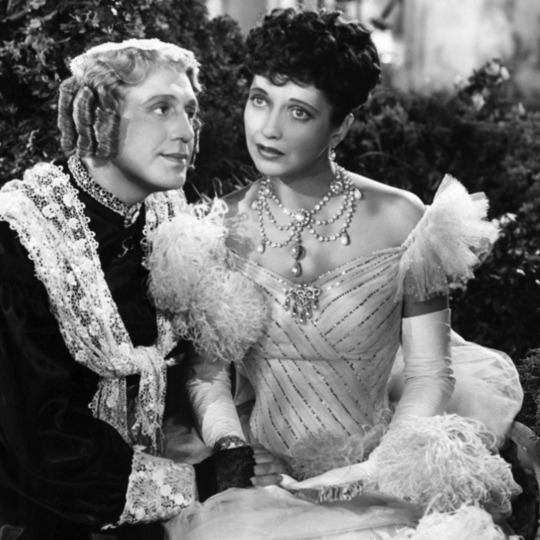
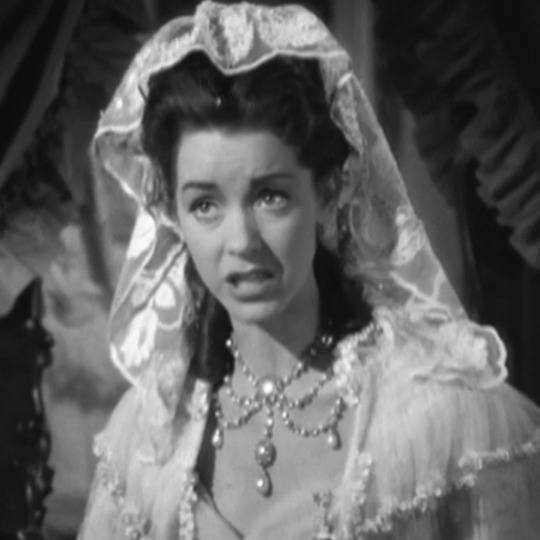
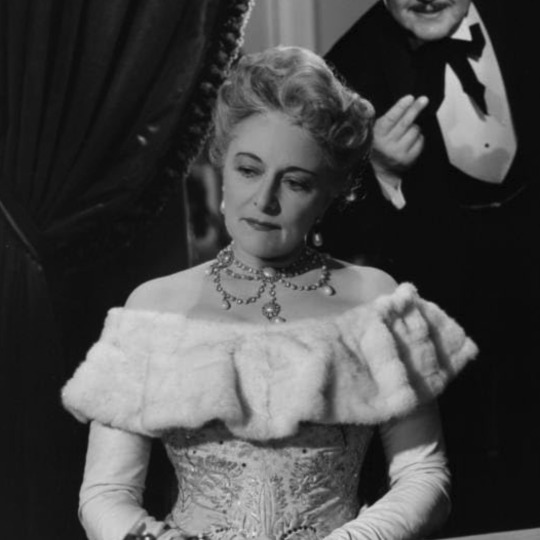
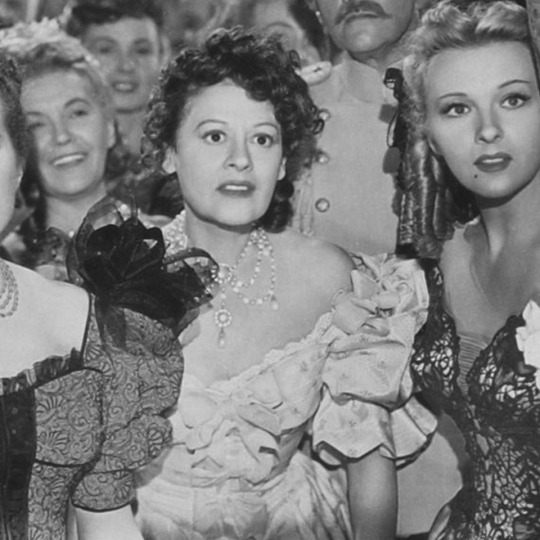
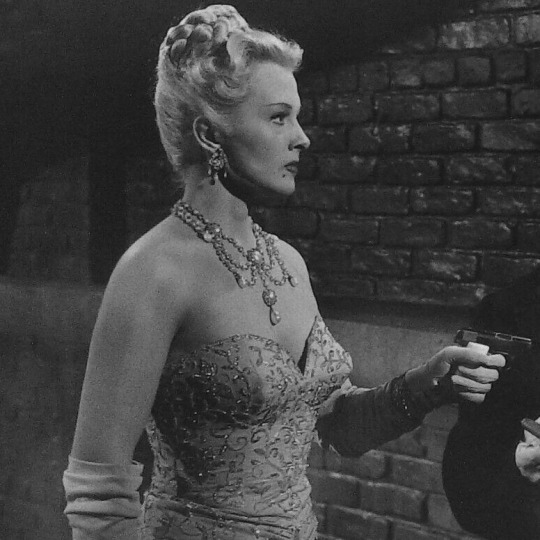
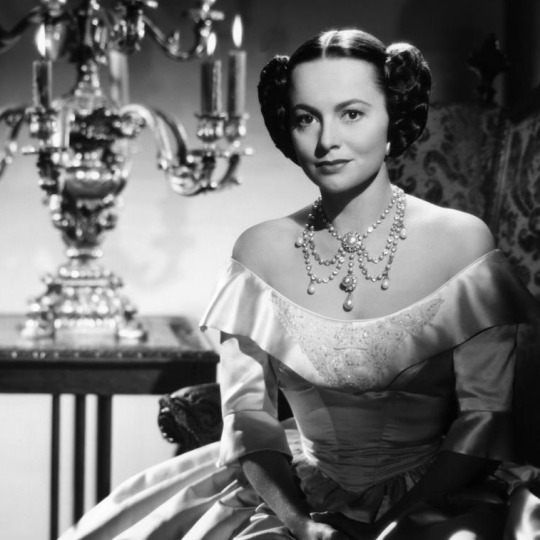
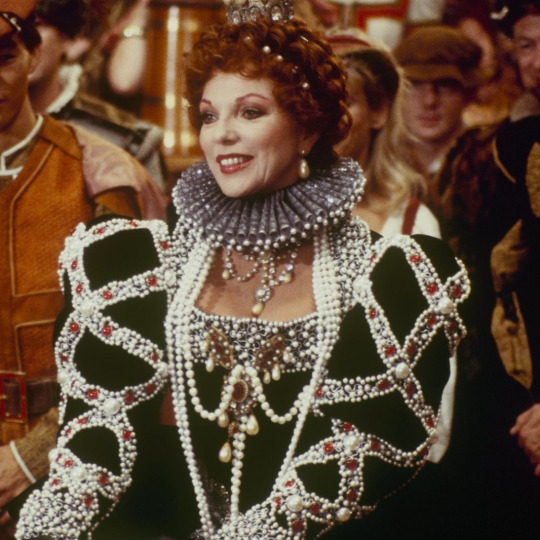
This distinctive pearl necklace was designed by Joseff of Hollywood, who created jewelry for many films during Hollywood’s Golden Age. Because Joseff was not contracted to a particular studio, he was able to rent out his pieces to all of the film studios.
The above necklace first appeared on Kay Francis as Donna Lucia d’Alvadorez in the 1941 adaptation of Charley’s Aunt. In 1945 it appeared on Marsha Hunt as Constance Scott in The Valley of Decision. The following year saw it worn on the neck of Nella Walker as Mrs. Lawrence Tyburt Patterson Sr. in Two Sisters from Boston. 1947’s Northwest Outpost used it on Lenore Ulric as Baroness Kruposny. Ilona Massey was next to wear the piece as Madame Egelichi in the 1949 Love Happy.
In the 1952 adaptation of Daphne Du Maurier’s novel My Cousin Rachel, Olivia de Havilland wore the necklace as Countess Rachel Sangalletti Ashley, and it features somewhat in the plot of the production. Richard Burton’s character gives the necklace to Rachel as a symbolic gesture that he wishes to marry her, which sets the remainder of the story into motion. The passage in the novel describing the necklace says:
There were four strands. They fastened around the neck like a band, with a single diamond clasp.
The description in the novel obviously does not match its representation on screen, but it is a beautiful necklace nonetheless.
Finally, in 1987, the necklace was seen on Joan Collins’ character Alexis Carrington Colby in the episode of Dynasty entitled The Fair.
The necklace eventually went up for auction at Julien’s Auctions in the 2017 Joseff of Hollywood: Treasures from the Vault. The action describes the piece as:
A triple-strand, tiered necklace of alternating simulated diamonds and pearls with pearl drops. The necklace has four simulated mabe pearl medallions and is stamped on the back “Joseff Hollywood.”
To learn more about Joseff of Hollywood jewelry, you can visit their official website, or read Jewelry of the Stars: Creations from Joseff of Hollywood by Joanne Dubbs Ball.
Costume Credit: Dean, Eugene Joseff (Joseff of Hollywood), Veryfancydoilies, Katie S., Solidmoonlight
Follow: Website | Twitter | Facebook | Pinterest | Instagram
260 notes
·
View notes
Text
SOA supplementals
Primary Sources / Letters
Papers of George Washington RevWar Series volume 11 (all)
The Army Correspondence of Colonel John Laurens in the Years 1777-1778 compiled by William Gilmore Simms (p.145-162)
The Papers of Henry Laurens volume 13 (p.33-140)
The Political Writings of Alexander Hamilton by Holloway and Wilson (p.7-117)
Backstory / additional context
The First Conspiracy by Brad Meltzer and Josh Mensch (all)
The Great New York Fire of 1776: A Lost Story of the American Revolution by Benjamin Carp (all)
Kidnapping the Enemy by Christian M. McBurney (all)
Strategy, Politics, Staff
Fatal Sunday by Lender and Stone (p.xi-122)
Washington's Secret War by Thomas Fleming (all: p.223-244)
To Starve the Army at Pleasure by E. Wayne Carp (various)
The Valley Forge Winter by Wayne Bodle (all: p.163-220)
George Washington's Indispensable Men by Arthur Leftkowitz (p.15, 45-157)
John Laurens and the American Revolution by Gregory Massey (p.86-106)
Washington's General: Nathaniel Greene and the Triumph of the American Revolution by Terry Galloway (p.165-171)
Wives / Women of the Army
Founding Mothers: The Women Who Raised Our Nation by Cokie Roberts (various)
The General & Mrs Washington by Bruce Chadwick (p.209-222)
Martha Washington: An American Life by Patricia Brady (p.118-126)
Caty: A Biography of Catherine Littlefield Greene by John & Janet Stegeman (p.48-59)
Pox Americana by Elizabeth Fenn (p.98-103)
Spies
Revolutionary Spies Intelligence and Espionage in America's First War by Tim McNeese (p.99-209)
General Washington's Spies on Long Island and in New York by Morton Pennypacker (p.1-119)
Washington's Spies by Alexander Rose (all)
Spies in the Continental Capital by John Nagy (all)
George Washington's Secret Spy War: The Making of America's First Spymaster by John Nagy (all)
Allies / foreign officers / special forces
Unlikely Allies: How a Merchant, a Playwright, and a Spy Saved the American Revolution by Joe Richard Paul (all)
Thomas Paine: Enlightenment, Revolution, and the Birth of Modern Nations by Craig Nelson (p.99-145)
Special Operations During the American Revolution by Robert Tonsetic (p.7-149)
Light Horse Harry: A Biography of Washington's Great Cavalryman by Noel B. Gerson (p.1-60)
John Paul Jones: Sailor, Hero, Father of the American Navy by Evan Thomas (p.97-133)
The Admiral and the Ambassador by Scott Martelle (p.49-54)
Tadeusz Kościuszko and Casimir Pulaski: The Lives of the Revolutionary War's Most Famous Polish Officers by Charles River Editors (Pulaski section)
Pulaski: A Portrait of Freedom by R.D. Jamro (p.85-99)
Steuben / Drill
The Drillmaster of Valley Forge by Paul Lockhart (p.105-113)
The Life of Von Steuben by Frederich Kapp (p.120-136)
Baron Von Steuben's Revolutionary Drill Manual: A Facsimile Reprint of the 1794 Edition (all)
Lafayette
For Liberty and Glory: Washington, Lafayette and Their Revolutions by James R. Gaines (p.98-106)
Adopted Son by David Clary (p.154-179)
Lafayette by Harlow Giles Unger (p.65-71)
The Marquis: Lafayette Reconsidered by Laura Auricchio (p.59-64)
#idk if I wanna tag this as sources#because it's not an exhaustive list- just the physical books#Chapter 19#this is mostly a reference for me#but figured I'd share as a rec for people looking for titles
32 notes
·
View notes
Text
In the midst of his feverish diplomacy [at the court of Versailles], Laurens found time for personal matters. During his year in London, he had married "Patty" Manning, the daughter of his father's English partner, and she had delivered their daughter after he sailed to join Washington's army; although Mrs. Laurens had made plans to join her husband in America, her delicate health made the journey impossible. Hearing that Laurens was coming to France, she and her daughter smuggled themselves across the English Channel and joined the young colonel in Paris. It was a long, difficult journey, made at considerable risk. [...] Young Laurens himself was engaged in fundamental sabotage of His Majesty's hopes of victory; yet in the finest traditions of romance, Patty Laurens ignored the English spies and informers swarming in Paris and in the channel ports and rushed to her soldier.
Thomas Fleming, Beat the Last Drum (2016)
Truly amazing how you can just Say Things in a published history book. 🥲
There's a lot that's factually wrong here, but perhaps the most frustrating is the fanciful narrative that Martha Manning Laurens went off on a daring, romantic jaunt to see her husband. The reality was far from that, even from what little remains of her historic footprint, so it's a weird angle to spin.
Martha had spent over four years in London caring for their daughter on her own and making repeated pleas to travel to America. John found a reason to rebuff all of these, not because of her "delicate health" but rather on account of the risk of the voyage (which, admittedly, was not trivial). Most likely, his underlying reasoning was more selfish – having his family close by would require him to divide his time and attention, an inconvenince he was not willing to take on when there were more glorious things to do.
Left behind, ignored and dismissed, it is reasonable to conclude that Martha dared the journey to France in a last-ditch attempt to meet up with John and to travel back to America in his company (a plan he could hardly refuse). However, according to Massey, the reunion probably never happened, in part because Martha only learned of John's presence in Paris when he was already wrapping up his mission. He doesn't seem to have bothered to inform her ahead of time, and it certainly didn't occur to him that this would have been a convenient and expedient way to bring his wife and daughter home with him. (This man spent a month on a boat. It's not like he didn't have time to think about this.)
We don't need to – and shouldn't – exonerate John's poor treatment of Martha and Frances by plastering over it with this kind of romantic revisionism.
67 notes
·
View notes
Note
Commander Bennet please!!
Ooh, thank you!! I'm super fond of this one. I promised myself that I wouldn't post any of it on AO3 until I'm actually done, which is why it may seem like all I do is talk about it! I really have written things, but it's nowhere near done. Here's the opening, though:
Elizabeth Bennet knew what people called her behind her back, whether they were Alliance or not. The butcher of Torfan. They didn’t understand. Nobody did, really, not even Captain Gardiner, who’d defended her to the tribunal, or Major Massey, who’d ordered her to take Torfan at any cost and been honorably discharged later. Elizabeth was resigned to that. When she could do something about a problem, she acted; when she couldn’t, she let it go. And she couldn’t do anything about the past. Least of all when she didn’t regret it.
Anyway, this is my Pride and Prejudice fusion with Mass Effect, aka an AU of both stories in which the cast of P&P takes on the roles of various ME characters and essential elements of both plots occur. This has been challenging but really interesting to figure out—how to center both the epic space adventures of the ME1 plot and the Elizabeth/Darcy relationship + character development that make P&P what it is.
Overall, I've got the P&P plot points nestled within the larger sweep of ME1, and in some ways rearranged to make sense of so many P&P characters filling out the crew of a stealth military starship without requiring a ludicrous number of coincidental pre-existing relationships (I granted myself only one of these, with the other relationships developing on the Normandy). So I've been figuring out which P&P characters stay human (Jane, Wickham, Lydia, Mr Collins, etc) and which would become unrelated aliens (Darcy, Charlotte, Fitzwilliam, Georgiana, etc), how the differences between the P&P characters and the ME characters whose roles they're filling play out, and so on.
My summation of Elizabeth as Commander Bennet in my notes—
Commander Elizabeth Bennet is a resourceful, charismatic, tactically brilliant, and extremely tech-savvy Alliance officer, and a fusion of Commander Shepard and Elizabeth Bennet.
She used her precision as a mechanist and sniper to not only survive but extract victory out of the apparently unwinnable Battle of Torfan, and tries not to think about it too much these days, following her canonical advice to "Think only of the past as its remembrance gives you pleasure."
Class: Infiltrator, more or less
Background: Spacer & Ruthless
Originally, I assumed Elizabeth would of course have one of the nobler service records than the Torfan option, but that as the seed of her philosophy was such a wild concept that I couldn't resist trying to make sense out of it.
#incognitajones#respuestas#meme prattle#long post#fic talk#fic talk: commander elizabeth bennet au#anghraine's gaming#elizabeth bennet#mass effect#pride and prejudice#austen blogging#the adventures of space redacted
11 notes
·
View notes
Text
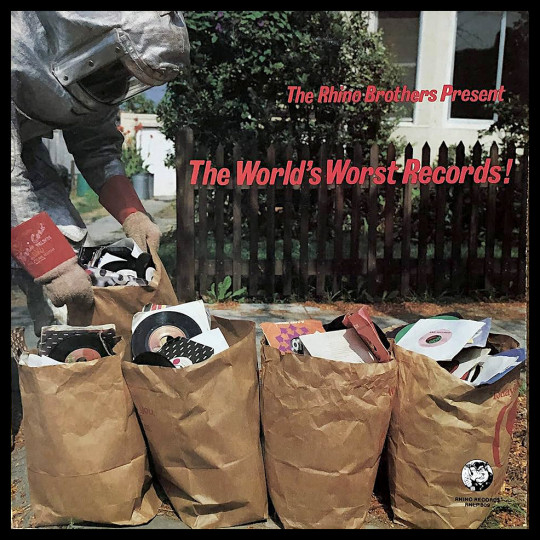
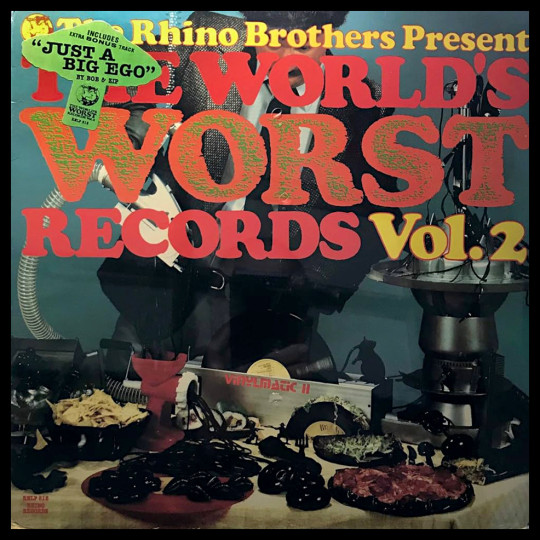
The Rhino Brothers Present the World's Worst Records: Volumes 1 & 2 are a series of compilation albums released by Rhino Records in 1983 & 1985. They purport to compile the worst music ever recorded and feature mostly novelty songs, parodies and cover versions of popular songs, performed very poorly (though in many cases, intentionally so, either as a novelty or as a joke). The original first volume included an airsickness bag and a warning that the album 'may cause internal discomfort.' Full track lists include...
VOLUME 1 [1983]: 1. "The Crusher" (The Novas) 2. "Big Girls Don't Cry" (Edith Massey and The Eggs) 3. "I Want My Baby Back" (Jimmy Cross) 4. "I Like" (Heathen Dan) 5. "Kazooed on Klassics" (The Temple City Kazoo Orchestra) 6. "Fluffy" (Gloria Balsam) 7. "Paralyzed" (Legendary Stardust Cowboy) 8. "I Wanna Be Your Dog" (The Seven Stooges) 9. "Boogie Woogie Amputee" (Barnes and Barnes) 10. "Kinko the Clown" (Ogden Edsl) 11. "Umbassa and the Dragon" (The Turtles) 12. "Ugly" (Johnny Meeskite) 13. "Surfin' Tragedy" (The Breakers) 14. "Young at Heart" (Wild Man Fischer) [YOUTUBE: FULL ALBUM]
VOLUME 2 [1985]: 1. "Downtown" (Mrs. Miller) 2. "K'nish Doctor" (Mickey Katz) 3. "Party in My Pants" (Barnes and Barnes) 4. "Foreign Novelty Smash" (The Credibility Gap) 5. "Nag" (The Halos) 6. "Who Hid the Halibut on the Poop Deck" (Yogi Yorgesson) 7. "Goodbye Sam" (Shad O'Shea) 8. "Just a Big Ego" (Bob Rivers and Zip) 9. "Candy Rapper" (Bird & MacDonald/"Sticky Fingers") 10. "Hands" (Debbie Dawn) 11. "Baseball Card Lover" (Rockin' Richie Ray) 12. "Fudd on the Hill" (Little Roger and the Goosebumps) 13. "Split Level Head" (Napoleon XIV) 14. "Teenage Enema Nurses in Bondage" (Killer Pussy) 15. "The Troggs Tapes" (The Troggs)
57 notes
·
View notes
Text
Celebrate Romance Month, and Romance All Year, with 25 Queer Books!
August has been romance month, and we’ve used the time to gather a list of our 25 favorite romantic queer stories! These may not be books you’d literally find shelved in the romance section, but they’re tales, in whatever genre, that feature strong romantic plots or subplots, and that people in the Press felt were appropriate for this list. The stories were suggested by Adrian Harley, Alessa Riel, boneturtle, D. V. Morse, ilgaksu, Nina Waters (unforth), ramblingandpie, Shadaras, Tris Lawrence (tryslora), and an anonymous contributor. Now that August is coming to a close, we wanted to share the list with you, and keep the romance going as the seasons turn and the days pass.
Read on…

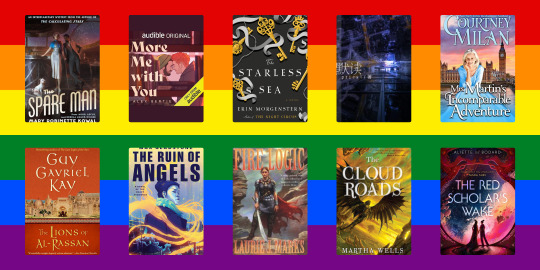

25 Queer Books for Romance Month
The Priory of the Orange Tree by Samantha Shannon
The Magpie Lord by K. J. Charles
Red, White, and Royal Blue by Casey McQuiston
After Our Divorce, I Still Wore Your Jacket by Bu Wen San Jiu
You Made a Fool of Death with Your Beauty by Akwaeke Emezi
The Spare Man by Mary Robinette Kowal
More Me with You by Alex Bertie
The Starless Sea by Erin Morgenstern
Silent Reading by priest
Mrs. Martin’s Incomparable Adventure by Courtney Milan
The Lions of Al-Rassan by Guy Gavriel Kay
The Ruin of Angels by Max Gladstone
Fire Logic by Laurie J. Marks
The Cloud Roads by Martha Wells
The Red Scholar’s Wake by Aliette de Bodard
Mr. Melancholy Wants to Live a Peaceful Life by Cyan Wings
Black or White by Sachimo
Like Real People Do by E. L. Massey
Golden Stage by Cang Wu Bin Bai
Heaven Official’s Blessing by Mo Xiang Tong Xiu
Those Years in Quest of Honor Mine by Man Man He Qi Duo
Your Distance by Gong Zi You
Swordspoint by Ellen Kushner
Global University Entrance Examination by Mu Su Li
A Lady for a Duke by Alexis Hall
What are YOUR favorite queer stories with romantic plots or subplots? Tell us in the comments! We’d love to hear your recs!
Who We Are: Duck Prints Press LLC is an independent publisher based in New York State. We help fancreators publish their original (mostly queer) work! Want to always hear the latest? Sign up for our monthly newsletter!
50 notes
·
View notes
Text

"Arms are so difficult to draw"...
While the Duke and Duchess of York (the future King George V and Queen Mary) were away on a royal tour in 1901, King Edward VII and Queen Alexandra commissioned an artist, Mrs. Gertrude Massey, to paint miniature portraits of their children, David, Bertie, Mary and Harry, as surprise gifts for them on their return. Mrs. Massey spent a lot of time with the children and got to know them well, and they became very fond of her.
In her memoir, Kings, Commoners and Me (1934), Massey described each of the children. She saw Prince Edward (David) as the "the most interesting" and Princess Mary as "the most mischievous".
As for little Bertie, she related a story of how one day he asked if he could draw her, "for a change", and she obliged him. As he drew, she observed "His face was so expressive, one could almost read his thoughts." His expression showed that he was pleased with his drawing, except for one thing.
"Would you mind if I don't give you any arms?'' he asked. "Arms are so difficult to draw."
Aw, Bertie!!! <3
I enjoy reading about these little moments throughout his life when Bertie's creative side would shyly show itself. I think he did have a creativity about him; he just didn't really get a lot of opportunity to explore it. Although he was never interested in fine arts and culture the way his younger brother the Duke of Kent was, I think he enjoyed designing and creating and was proud of these accomplishments in his humble way.
For instance, he loved landscape gardening, (once he wrote a letter in the "language of Rhododendrum"!). He did needlepoint, and created a set of 12 chair covers for Royal Lodge. He also designed the George Cross and George Medal himself. And of course there was his life long interest in photography and filming, which I can particularly relate to and understand. Even during his last Sandringham Christmas, King George designed trousers to be worn with the Order of the Garter robes instead of the traditional knee pants and Prince Philip photographed him wearing them. It has been repeated often that when he got interested in something, he was all in! That is the essence of a creative spirit, in my eyes.
What a sweet, sensitive soul.
Sources: Kings, Commoners and Me (1934) by Gertrude Massey; George and Elizabeth, A Royal Marriage (1983) by David Duff; Bonhams; The Royal Collection Trust
#bertie the artist#bertie's expressive face#sweet little bertie#king george vi#prince albert#prince bertie#king bertie#george vi#Prince Edward#Princess Mary#Gertrude Massey#david & bertie#bertie & elizabeth#british royal family#art#young royals
21 notes
·
View notes
Text
Seven Sentence Sunday
tagged by @strandnreyes, @lemonlyman-dotcom, @chicgeekgirl89, and @wandering-night19. Thanks!
Technically I did this yesterday, but I didn't actually remember to title it, so it doesn't count? Or something.
Also, I'm attempting to remind myself that I do in fact know how to come up with a plot. So, have a few more (which technically are not in fact plot relevant, but whatever).
He eyes the boba tea TK puts down on his desk warily. Mitchell, who apparently does not know that this particular boba tea place is two blocks down from Massey's office, and TK only stops there when Massey drags him downtown for a meeting instead his usual preference of showing up unannounced at the Blaton, takes a sip and flutters her eyelashes dramatically. She yanks TK down to press an obnoxious smacking kiss to his cheek. "You are my favorite man." "Austin, lock up your daughters," TK says dryly. "I don't think it's the daughters we need to worry about," comes a voice from behind them. Carlos flushes, embarrassed at having been caught out by his captain, but TK just spins on his heel giving her a charming smile. "Captain Washington, I'm happy to say I'm firmly off the market." She gives him a deadpan look. "The mothers and fathers of Austin can rest easy tonight. Is there a reason you're gracing us with your presence Mr. Strand?" TK grins and makes a chocolate creamed filled mochi donut appear like magic, and Carlos genuinely has no idea where he'd been keeping it. "To bring you this of course." She takes it. "Bribing a police officer is a serious offense, Mr. Strand." TK nods. "Understood." He looks at her from under his lashes. "What does it buy me?" She snorts and takes a bite of donut. "It buys you as long as it takes me to eat this donut in peace. After that these detectives have work they need to be doing."
tagging anyone who wants to add to the bounty of snippets.
40 notes
·
View notes
Text
We updated our piece on policing and its impact on neurodivergent and disabled people to include Sonya Massey’s story.
May her memory be a revolution.
With music from: Meshell Ndegeocello, Swamburger & Scarlet Monk, Mr. Lif & Stu Bangas, Ashley Davis & Oompa, Ezra Furman, Ragę Against the Machine
3 notes
·
View notes